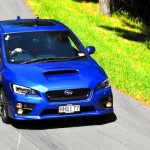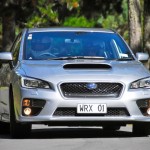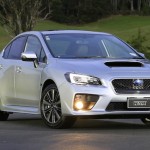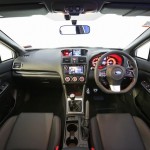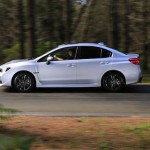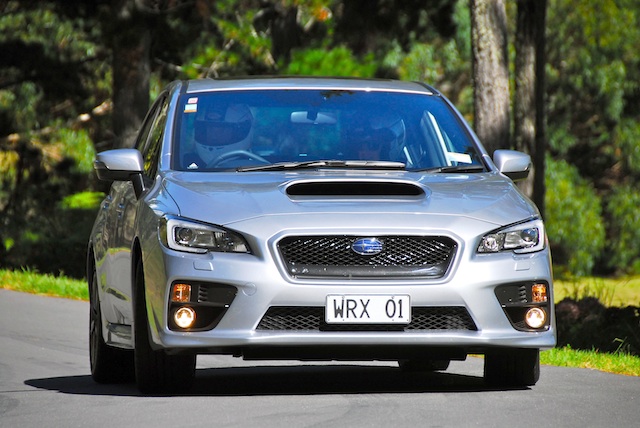
It’s an image thing, see. The original Subaru WRX was stuck with it and now the carmaker wants to put it to rest forever.
It’s the ‘boy racer’ tag, where tatts and studs and baseball caps turned backwards seemed to define the typical WRX driver: young, restless, sneering.
Never mind that the WRX was winning World Rally Championship titles, on civvy street it was still the so-called ‘getaway’ car, often with a drainpipe-like exhaust and a driver in a slumped position, stretching out for the steering wheel. Cool man! Except in a crash.
It’s taken Subaru three-generations of WRX hatchbacks and sedans to shake off the rapsta-gangsta tag. Now the label can be put to bed with the fourth-generation model. It’s a sedan only, a grown-up’s car, the classiest WRX of them all. The old ‘best bang for a buck’ description might still apply, although it’s too crude for the latest model. Better Subaru’s own term: ‘first class fun.’
There is one thing that is similar to the original, however, and that’s the price: $48,990 for the entry-level six-speed manual. That’s $1000 cheaper than the five-speed manual back in 1993.
The new WRX was launched this week, on a drive from Auckland to the Coromandel and a sprint on Kiwi motorsport great Rod Millen’s Leadfoot ranch. The sealed Leadfoot hillclimb is a demanding mix of bends and switchbacks. The WRX was never out of second and third gears.
The cars gets a maximum five-star crash safety rating and is available in two models, powered by a turbocharged 2.0-litre flat-four engine delivering 197kW/350kW – only 1 per cent more power and 2 per cent more torque than the old 2.5-litre engine, but 11.5 per cent more economical. As a result CO2 emissions are down 13.8 per cent.
The 2.0-litre direct-injection unit drives all four wheels via a six-speed manual gearbox or eight-speed continuously variable transmission automatic with paddle shift manual mode. Subaru calls it Sport Lineartronic.
Subaru NZ managing director Wallis Dumper believes the automatic option widens the car’s appeal in a segment of the go-faster market dominated by front-drive cars. “It gives us access to a new area of the market with the added value of all-wheel drive as a significant point of difference,” he said. “We can see greater sales growth potential with WRX as a sedan.
“It will be fun to drive for a broader range of drivers and in a broader range of settings – giving it broader appeal. We knew right from the start we had something special being engineered as the test track comparison car was a Porsche Carrera S.”
Re-worked suspension, stiffened structure, upgraded brakes with improved fade resistance, quicker steering ratio and Active Torque Vectoring – which constantly varies power to each wheel – makes for a very attractive performance car, helped by being priced between $48,990 and $54,990.
The standard WRX gets a traditional key; the better equipped Premium models get push-button start. Both models include climate control air conditioning, remote central locking with an immobiliser and alarm security system with Datadots, cruise control, a trip computer, electric windows and mirrors, and Bluetooth with USB ports. The driver has a height and reach adjustable steering column, which is leather covered along with the hand brake and gear selector.
Standard features on the Premium model include leather upholstery, sunroof, satellite navigation, rain-sensing wipers, dusk-sensing LED headlights and a powered driver’s seat. Optional on both models is a sports body kit with rear diffuser and boot-mounted spoiler.
The cabin is all business, functional and minimalist with soft-touch surfaces and sporty instruments including a turbo boost gauge. There are no cosmetic fancy bits – everything has a role. Premium variants get a harman kardon sound system, with Fujitsu Ten head unit.

